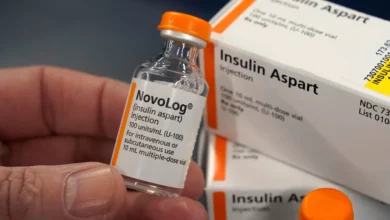
Only about one in eight people with so-called pre-diabetes, often a precursor to full-blown disease, know they have a problem, a US study found.
Lacking awareness, people with the elevated blood sugar levels were also less likely to make lifestyle changes such as getting more exercise or eating less sugary food that might prevent them from ultimately becoming diabetic.
“People with pre-diabetes who lose a modest amount of weight and increase their physical activity are less likely to develop diabetes,” lead study author Dr. Anjali Gopalan, a researcher at the Philadelphia VA Medical Center, said by email. “Our study importantly shows that individuals with pre-diabetes who were aware of this diagnosis were more likely to engage in some of these effective and recommended healthy lifestyle changes.”
Globally, about one in nine adults have diabetes, and the disease will be the seventh leading cause of death by 2030, according to the World Health Organization.
Most of these people have Type 2, or adult-onset, diabetes, which happens when the body can't properly use or make enough of the hormone insulin to convert blood sugar into energy.
Average blood sugar levels over the course of several months can be estimated by measuring changes to the hemoglobin molecule in red blood cells. The hemoglobin A1c test measures the percentage of hemoglobin – the protein in red blood cells that carries oxygen – that is coated with sugar, with readings of 6.5 percent or above signaling diabetes.
But A1C levels between 5.7 percent and 6.4 percent are considered elevated, though not yet diabetic.
More than one third of US adults have such elevated blood sugar levels and each year about 11 percent of them progress to having full-blown diabetes, Gopalan and colleagues note in the American Journal of Preventive Medicine.
To gauge awareness of this heightened diabetes risk among people with the condition, researchers weeded out people who said they already had the disease. Then, they reviewed A1c test results for the rest.
Out of 2,694 adults with test results showing elevated A1c, only 288 people were aware of their status.
People who were aware of their condition were about 30 percent more likely to exercise and get at least 150 minutes of moderate activity each week.
They were also about 80 percent more likely to attempt weight loss and to have shed at least 7 percent of their body weight in the past year.
In 2014, the US Preventive Services Task Force, a government-backed independent panel that reviews medical evidence, said that screening for diabetes risk does help to identify people headed for full-blown disease and can help some of them to avert it with medication and lifestyle changes.
It’s possible that some patients in the current study had been told about their status but didn’t recall or didn’t understand the specific way researchers asked about the condition, said Dr. Laura Rosella, a public health researcher at the University of Toronto.
“The health care provider has to tell the patient that they don’t meet the criteria for diabetes but they aren’t quite out of the woods, which can be a challenging concept to get across,” Rosella, who wasn’t involved in the study, said by email. “This challenge could explain the low awareness.”
Some patients may also have been tested for diabetes using another measurement known as an oral glucose tolerance test, which can get different results than screening for A1c, said Dr. Robert Cohen, a diabetes specialist at the University of Cincinnati College of Medicine.
“People can pass by one and miss by the other and it is confusion,” Cohen, who wasn’t involved in the study, said by email. “Many labeled as pre-diabetes by A1c would have diabetes if tested by the gold standard oral glucose tolerance test.”




